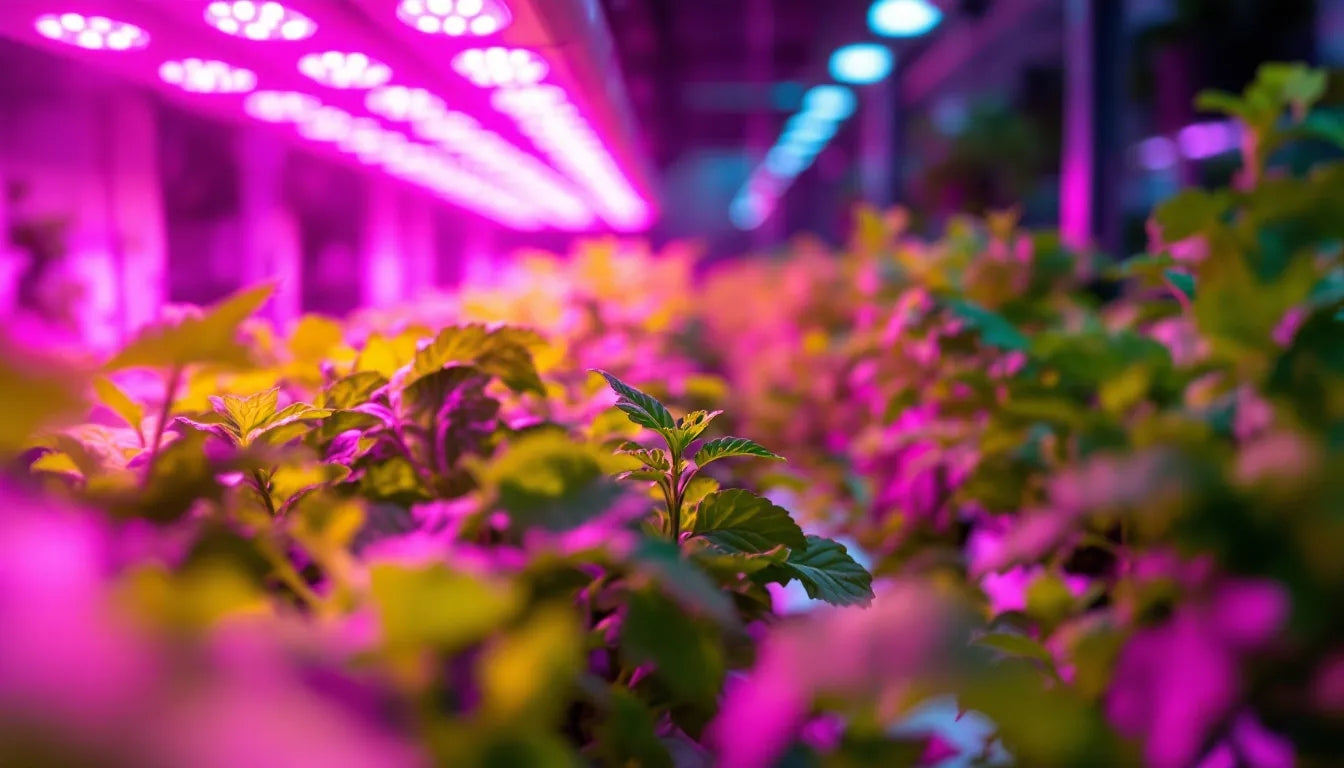
Understanding Inline Duct Fans for Grow Tent Applications
An inline duct fan represents a specialized ventilation system designed specifically to integrate seamlessly into your grow tent's ducting network. Unlike traditional axial fans that simply push air in one direction, inline fans utilize advanced mixed-flow technology that combines the best features of both centrifugal and axial designs. This innovative approach delivers superior pressure capabilities while maintaining excellent airflow rates, making them ideal for overcoming the resistance created by carbon filters, long ducting runs, and other ventilation components.
The core design features a precision-engineered impeller housed within an aerodynamically optimized casing. This configuration allows the fan to generate powerful suction that efficiently pulls stale, humid air from your grow space while simultaneously drawing fresh, CO2-rich air through intake ports. The result is a complete air exchange system that maintains perfect environmental conditions for plant health and productivity.
Why Your Grow Tent Needs an Inline Duct Fan
Temperature Regulation and Heat Management
Heat buildup represents one of the biggest threats to successful indoor growing. Modern grow lights, while energy-efficient, still generate substantial amounts of heat that can quickly accumulate in enclosed spaces. An inline duct fan for grow tent setups provides the powerful air movement necessary to remove this excess heat before it can stress your plants or create dangerous hot spots.

The continuous air exchange facilitated by quality inline fans prevents temperature spikes that can cause leaf burn, reduced photosynthesis efficiency, and stunted growth. During lights-on periods, these fans work tirelessly to exhaust hot air while drawing in cooler fresh air, maintaining the precise temperature ranges that different plant species require for optimal development.
Humidity Control and Mold Prevention
Excessive humidity creates the perfect breeding ground for mold, mildew, and other fungal pathogens that can devastate entire crops within days. Plants naturally release moisture through transpiration, and this moisture must be continuously removed to prevent dangerous accumulation. An inline duct fan excels at this critical task by creating negative pressure within your grow space, forcing humid air out through the exhaust system while drawing in drier fresh air.
This constant air movement also helps strengthen plant stems through gentle mechanical stress, resulting in more robust plants that can better support heavy fruiting loads. The air circulation also disrupts the still air conditions that many pests prefer, creating a less hospitable environment for spider mites, aphids, and other common grow tent invaders.
Sizing Your Inline Duct Fan for Maximum Efficiency
CFM Calculation Fundamentals
Choosing the correct fan size requires understanding CFM (Cubic Feet per Minute) ratings and how they relate to your specific grow tent dimensions. The basic calculation starts with determining your tent's total volume by multiplying length × width × height. However, real-world conditions require accounting for additional factors that reduce effective airflow.
For a standard 4x4x7 grow tent with 112 cubic feet of space, you'll want to achieve complete air exchange at least once per minute under normal conditions. This means your base CFM requirement equals 112. However, several factors require upgrading to a more powerful fan to compensate for efficiency losses.
Accounting for Real-World Conditions
Carbon filters typically reduce airflow by 20-25%, requiring you to multiply your base CFM by 1.25. Ducting length and bends add additional resistance - straight runs reduce efficiency by about 10%, while each 90-degree bend can reduce airflow by up to 15%. Heat-generating equipment like HID lights may require 30-50% additional airflow capacity to maintain optimal temperatures.
For most 4x4 grow tents, a Gorilla GXi 6-Inch Wireless Intelligent Inline Fan provides the perfect balance of power and efficiency, delivering ample airflow even with filters and moderate ducting runs. The intelligent controls allow precise adjustments based on real-time environmental conditions.
Installation Best Practices for Optimal Performance
Positioning and Mounting Considerations
Proper installation begins with strategic positioning of your inline duct fan within the ventilation system. The fan should be mounted outside the grow tent when possible to minimize noise transmission and heat generation within the growing space. Position the fan as close to the tent as practical while maintaining easy access for maintenance.
Create a straight ducting path whenever possible, as each bend reduces efficiency and increases noise. When bends are unavoidable, use gradual curves rather than sharp 90-degree elbows. Support all ducting properly to prevent sagging that could create restrictions or vibration points.
Electrical and Control Integration
Modern inline fans like the Gorilla Xi series offer advanced electronic controls that allow precise speed adjustment based on temperature, humidity, or timer settings. These smart controls not only optimize growing conditions but also reduce energy consumption and extend fan lifespan by preventing unnecessary high-speed operation.
Always use appropriate electrical protection including GFCI outlets in grow environments where moisture is present. Route electrical connections away from water sources and secure all wiring to prevent damage from moving parts or accidental contact.
Advanced Features in Modern Inline Fans
Smart Technology Integration
The latest generation of inline duct fans incorporates sophisticated automation features that revolutionize grow tent management. Temperature sensors automatically adjust fan speeds to maintain precise climate conditions, while humidity sensors prevent dangerous moisture accumulation without constant manual monitoring.

VPD (Vapor Pressure Deficit) control represents one of the most advanced features available in premium systems. This technology optimizes the relationship between temperature and humidity to maximize plant transpiration efficiency, leading to improved nutrient uptake and faster growth rates.
Noise Reduction Technology
Noise concerns often limit where growers can locate their operations, making quiet operation a crucial consideration. Advanced inline fans employ multiple noise reduction strategies including dynamically balanced impellers, vibration-dampening motor mounts, and acoustically optimized housing designs.
The Gorilla GXi Inline Fan series utilizes cutting-edge acoustic engineering to achieve whisper-quiet operation without sacrificing airflow performance. This allows discrete growing in residential settings where traditional fans would be prohibitively noisy.
Maintenance and Longevity Tips
Regular Cleaning and Inspection
Maintaining peak performance requires regular attention to both the fan and associated components. Dust accumulation on fan blades reduces efficiency and increases noise, while clogged filters can create dangerous back-pressure that strains the motor. Establish a monthly cleaning schedule that includes removing and washing removable components.
Inspect ducting connections for air leaks that reduce system efficiency and waste energy. Check mounting hardware for looseness that could cause vibration and premature wear. Replace worn or damaged components promptly to prevent cascade failures that could compromise your entire ventilation system.
Performance Optimization Strategies
Monitor your fan's actual CFM output using anemometer readings at various speeds to ensure it's meeting specifications. Environmental changes, filter loading, and component wear can all reduce performance over time. Document baseline measurements when the system is new to track degradation and plan maintenance intervals.
Consider upgrading to variable-speed controllers if your current fan lacks this feature. The ability to fine-tune airflow based on real-time conditions improves both plant health and energy efficiency while extending equipment lifespan through reduced wear.
Troubleshooting Common Issues
Addressing Airflow Problems
Insufficient airflow often results from undersized fans, clogged filters, or restricted ducting. Start troubleshooting by measuring actual CFM output and comparing it to specifications. Clean or replace filters, inspect ducting for obstructions, and verify that all connections are secure and properly sealed.
Excessive noise usually indicates mechanical problems such as worn bearings, unbalanced impellers, or loose mounting hardware. Address these issues promptly to prevent further damage and extend equipment life.
Electrical and Control Problems
Modern smart fans include diagnostic features that help identify electrical issues. Check power connections, verify proper voltage supply, and ensure control signals are reaching the fan correctly. Many problems can be resolved through simple resets or recalibration procedures outlined in the manufacturer's documentation.
Environmental Impact and Energy Efficiency
Sustainable Growing Practices
Energy-efficient inline fans contribute significantly to sustainable growing practices by reducing power consumption while maintaining optimal growing conditions. Look for models with high-efficiency EC motors that provide variable speed control and consume substantially less energy than traditional fixed-speed alternatives.
Smart controls that adjust fan speed based on actual environmental needs rather than running at constant high speed can reduce energy consumption by 30-50% while improving plant health through more stable conditions.
Choosing the Right Inline Fan for Your Setup
Budget Considerations and Value Analysis
While initial cost represents an important factor, consider total cost of ownership including energy consumption, maintenance requirements, and expected lifespan. Premium fans like the Gorilla Xi series offer advanced features and superior build quality that provide excellent long-term value despite higher upfront costs.
Factor in the cost of crop losses due to environmental problems when evaluating fan options. A reliable, properly-sized inline fan represents insurance against temperature spikes, humidity problems, and other environmental issues that can destroy months of careful cultivation work.
Future Expansion Planning
Consider your long-term growing plans when selecting an inline fan system. Modular designs that allow easy integration with additional tents or upgraded components provide flexibility for expanding operations. Standardized ducting connections and universal mounting options simplify future modifications and upgrades.
Maximizing Your Growing Success
The inline duct fan serves as the heart of any successful grow tent ventilation system, providing the precise environmental control necessary for achieving maximum yields and maintaining healthy plants. By understanding the principles of proper sizing, installation, and maintenance, growers can create optimal conditions that allow their plants to reach their full genetic potential.
Investing in quality ventilation equipment like the advanced inline fans available from Gorilla Grow Tent ensures reliable performance, quiet operation, and the sophisticated controls necessary for precision growing. Whether you're a beginner starting your first grow or an experienced cultivator looking to optimize your setup, the right inline duct fan will transform your growing experience and deliver the consistent results you're seeking.
Remember that proper ventilation represents just one component of a successful growing system, but it's arguably the most critical for maintaining the stable environmental conditions that separate amateur efforts from professional-quality results. Choose wisely, install correctly, and maintain properly to ensure years of reliable service from your inline duct fan investment.

Lena Myles
I'm a mushroom enthusiast and home cook based in Oregon. I'm passionate about foraging and creating fungi-focused recipes, especially delicious, plant-based dishes using gourmet mushrooms like trumpet, shiitake, and oyster. When I’m not in the kitchen, you’ll usually find me wandering the woods in search of new wild flavors.


